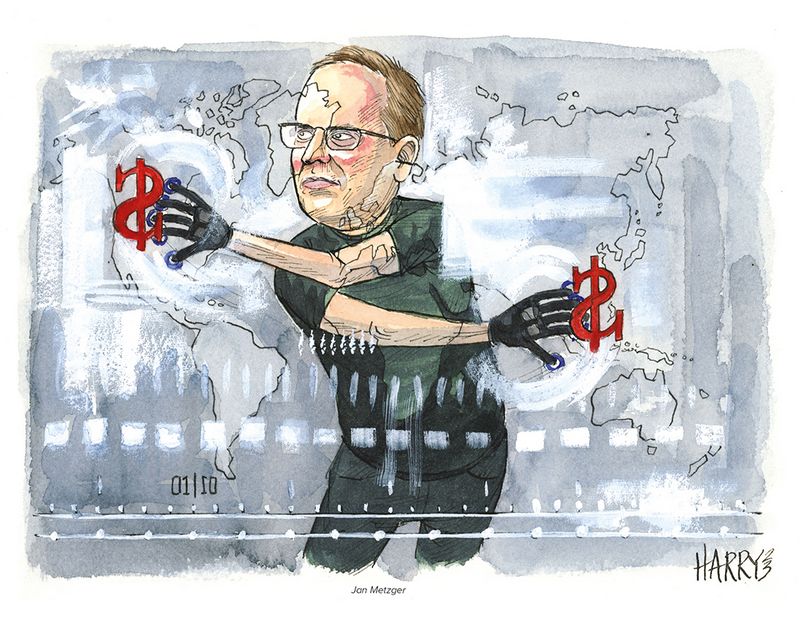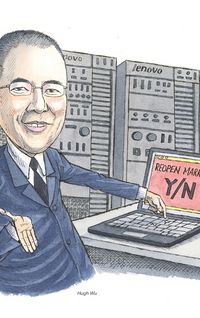Bridging the gaps:
Banks which geared their businesses primarily to China or the tech sector struggled for deal flow, but Citigroup’s pan-Asian footprint and diverse sector coverage made it a bastion of stability, while its commercial bank enabled it to give issuers more options in rapidly changing market conditions.
![]()
Issuers in Asia were faced in 2022 with volatile capital markets that were inclined to close at a moment’s notice, but Citigroup provided the stability clients needed to manage their funding plans.
Plenty of banks have done well over the years focusing most of their efforts on Chinese offshore activity. That strategy did not work in 2022, as a combination of strict Covid-19 controls, an economic slowdown and low onshore yields convinced many Chinese issuers to stick to their home market for funding.
Banks with a concentration on equity capital markets suffered too, as IPO plans were derailed. Adding to the pain for Asia, investors cut back on emerging market exposure following Russia’s invasion of Ukraine on February 24, and on Chinese assets specifically as defaults mounted in the property sector.
This uncertain environment was bad news for banks that had failed to diversify, and many cut headcount or counted the cost of bad loans.
Citi refined its focus instead. The sale of its retail businesses in India, South-East Asia and Australia could have given it an excuse to exit some markets or scale back coverage, but Citi remained committed to its pan-Asian footprint. Integrating its private bank and consumer wealth businesses, which have two of their four global wealth hubs in Asia, and using them better as a source of deal flow generated over 100 referrals from the private bank to its broader institutional businesses.
“Last year was the largest revenue year for the Asian corporate banking business in our history,” said Jan Metzger, head of Asia Pacific banking, capital markets and advisory. “In uncertain times, our corporate banking clients rely on us more than ever. The world is more complicated and there’s a need to move more FX and do more hedging.”
Citi’s full-service investment banking offering was shown in deals for blue-chip issuers like Lenovo Group. The bank was involved in successful loan, convertible bond and US dollar bond transactions for the computer manufacturer in 2022, including a green tranche and liability management exercises.
Meanwhile, it helped underwrite a NZ$1.2bn (US$830m) rights issue for Air New Zealand as part of a recapitalisation plan, then brought its debut offshore bond.
Bright spots
Asian IPO volumes were well down, with Chinese offshore issuance notably quiet, but the bank found plenty of bright spots. Citi was one of a handful of bookrunners picked for the W12.8trn (US$10.7bn) IPO of South Korea’s LG Energy Solution in January, which turned out to be the global high point for the year.
Even as primary issuance dried up, Citi landed a diverse range of blockbuster deals from around the region. These included the Rs206bn (US$2.7bn) LIC IPO for the Indian government and Thai Life Insurance’s Bt37bn (US$1bn) float. The former was India’s largest IPO ever, while Thai Life’s deal reopened the market and built a high-quality cornerstone book to ensure the deal’s success in tough conditions.
“Citi’s positioning has always been more pan-Asian than some other banks whose concentration has always been on a few countries or industries, and that has served us well this year,” said Kenneth Chow, co-head of Asia ECM.
It was the top Western bank for IPOs in Asia, and accrued around US$5bn in equity and equity-linked volume across the region, according to Refinitiv data.
“Citi has very much taken on a leadership role for IPOs,” said Udhay Furtado, co-head of Asia ECM. “We have been on the top line, delivering some of the biggest investors in these transactions.”
It helped Indian online logistics company Delhivery overcome aversion to the tech sector with its Rs52.4bn IPO, and identified that investor appetite for companies related to the electric vehicle sector was still strong, enabling it to find ample demand for the Hong Kong listings of EV manufacturer Zhejiang Leapmotor Technology and EV battery-maker CALB. The latter’s HK$10.1bn (US$1.3bn) offering was the year’s largest primary IPO in Hong Kong.
While some international banks deserted IPOs that became tough to execute, Citi stuck with them, even if it meant a smaller deal at the end. It also helped clients manage their funding while waiting for markets to improve.
“The importance of a global bank in this kind of market should not be underestimated, because we can deploy tools that brokers can’t, like private deals and solutions,” said Furtado. “The corporate bank helps in terms of giving our clients a holistic suite of options.”
Citi was one of the bookrunners on the US$52.3m Nasdaq IPO of Atour Lifestyle in November, the first major China-to-US listing in a year. The deal raised eyebrows as the US had threatened to delist Chinese companies unless China agreed to allow audit inspections.
The bank correctly perceived that a deal between the two countries was imminent, and managed to win over investors. The US and China announced an agreement just over a month after Atour listed, by which time the company was trading well above its US$11 per ADS offer price.
In the offshore bond market, Citi comfortably topped the G3 bond league table for Asia ex-Japan with US$20bn.
Issuers could not rely on Asia-only demand in 2022, but Citi connected them to international investors. The year started with a bang, with a US$4bn comeback deal for Reliance Industries, a US$4.75bn multi-tranche Yankee for National Australia Bank, and a US$2bn Tier 2 offering for China Construction Bank.
As rates skyrocketed and the offshore bond market became harder to read, Citi still managed to find demand for duration, with 25 and 30-year tranches for the Philippine and Indonesian sovereigns, respectively, and a 30-year issue for PTT Global Chemical.
Again, its diversity of coverage paid off, as it brought Malaysian shipping company MISC’s first US dollar trade since 2012, Air New Zealand’s debut offshore bond, and the first benchmark US dollar issue from the Australian public sector, for Export Finance Australia.
Selective approach
Citi saw the benefit of running its bond and loan teams together, allowing it to pivot seamlessly between funding options.
“We had a couple of clients where we advised them to do loans instead of bonds,” said Adrian Khoo, co-head of Asia debt capital markets, loans and acquisition finance. “We upsized their loan facilities so they could be flexible and size the bond accordingly.”
After amending terms of existing debt facilities for gold and copper miner Freeport Indonesia, Citi was able to bring a US$3bn multi-tranche bond debut, at tenors going out as far as 30 years, as well as increasing an existing revolver by US$1bn.
Citi racked up US$6bn of league table credit in the Asian loan market, where it has chosen to take on risk selectively – limiting its exposure to the Chinese property sector before the first signs of trouble, yet still able to deploy capital quickly for acquisition financing.
“This year, a lot of the focus of sponsor activities moved from China to South-East Asia and Australia,” said Benjamin Ng, co-head of Asia debt capital markets, loans and acquisition finance.
Citi was an MLAB on a US$700m dual-tranche facility for the privatisation of Singapore gaming hardware company Razer, and joined a US$6bn loan backing Australian biotechnology company CSL’s acquisition of Vifor Pharma, before bringing a US$4bn debut bond to take out some of the debt. In India, too, it provided financing for acquisitions by CVC Capital Partners, Adani Group and Wipro.
The bank strengthened its ESG credentials, acting as sole ESG structuring adviser when Ant Group converted a US$6.5bn facility into a sustainability-linked loan, and combining sustainability with acquisition finance in a S$860m SLL to help Lendlease Global Capital REIT buy a controlling stake in Singapore’s Jem shopping centre. On the bond side, it brought State Grid Corp of China’s first green bond, a rare social high-yield bond from Shriram Transport Finance, and Asia’s first sustainable insurance capital issue from Hanwha Life.
Many of Citi’s clients throughout the year were repeat issuers across multiple asset classes, showing that its long-term approach had paid off.
“If you’re a pure investment bank, you go to the client and do their IPO, then you have zero incentive to see them again,” said Metzger. “Because we have such a large corporate banking flow business, we intrinsically love our clients.”
To see the digital version of this report, please click here
To purchase printed copies or a PDF, please email shahid.hamid@lseg.com







